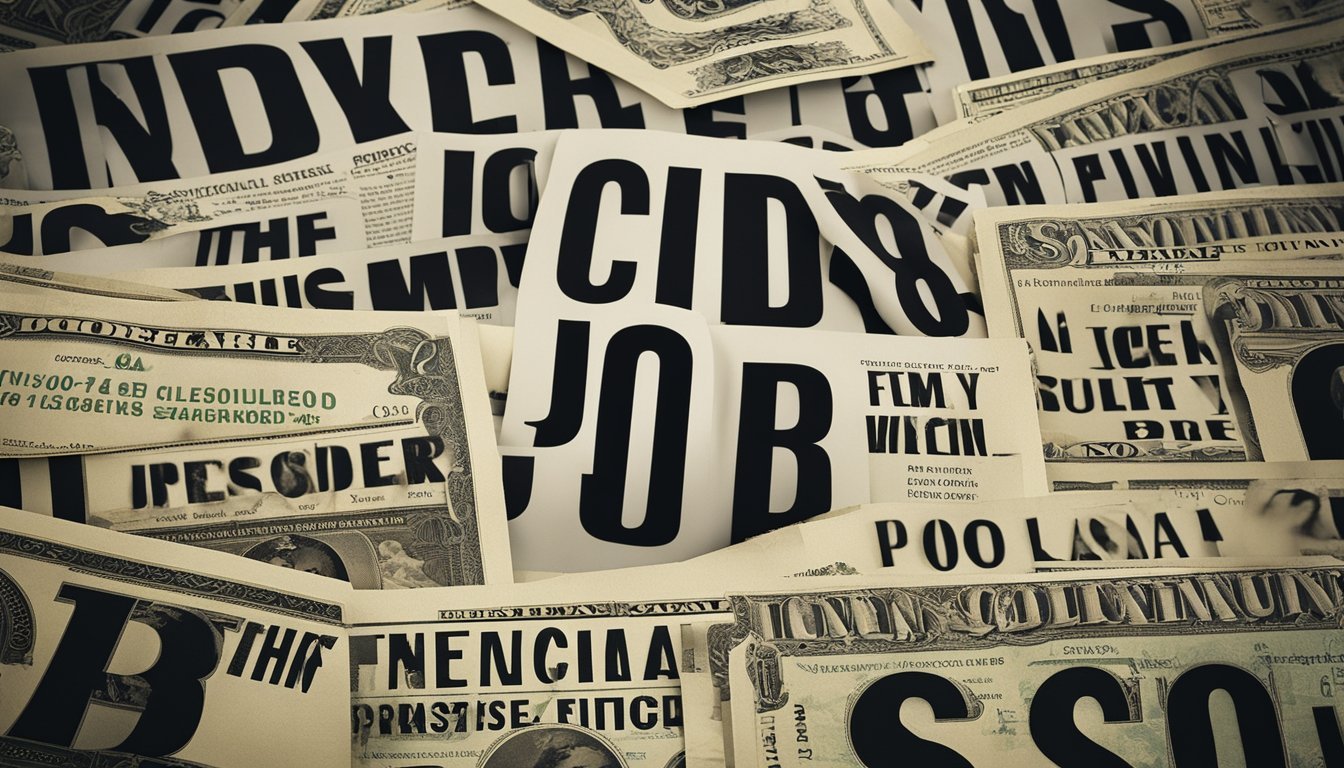Inside Job (2010) Review
Uncovering the Financial Crisis Truths
The documentary Inside Job (2010), directed by Charles Ferguson, dives deep into the factors and elements that contributed to the global financial crisis of 2008, which affected millions of people across the world. This award-winning film investigates the roles and responsibilities of key players in the realm of finance, government, and academia. By shedding light on the complex relationships and questionable conduct, the documentary provides a comprehensive overview of the crisis, its origins, and its consequences.
Inside Job meticulously unpacks the various levels of the financial system, from the deregulation of banks to the creation of complex financial instruments, such as mortgage-backed securities and credit default swaps. Through interviews with key figures in the industry, along with experts in the field, the film reveals how these practices led to toxic assets, skyrocketing debt, and ultimately the collapse of major financial institutions.
In addition to exploring the technical aspects of the financial crisis, Inside Job also delves into the ethical and moral considerations that were often overlooked by those in positions of power. By examining the conflicts of interest, corporate influence, and lack of oversight that allowed the crisis to unfold, the documentary invites viewers to critically assess the state of the financial industry and consider potential reforms needed for a more stable and just future.
Director and Production
Director's Profile
Charles Ferguson is the director of the critically acclaimed documentary, Inside Job (2010). He holds a Bachelor's degree in Mathematics from the University of California, Berkeley, and a Ph.D. in Political Science from MIT. Before transitioning into the world of filmmaking, Ferguson pursued careers in academia, consulting, and technology entrepreneurship. His expertise in various fields allowed him to comprehensively understand the 2008 financial crisis and create a compelling documentary that breaks down complex topics for a wide audience.
Production Company
Sony Pictures Classics and Representational Pictures were the production companies responsible for bringing Inside Job to life. The film was distributed by Sony Pictures Classics, known for distributing independent documentaries and feature films. Representational Pictures, founded by Charles Ferguson, specializes in creating thought-provoking documentary films.
The production team for Inside Job includes:
Producers: Charles Ferguson, Audrey Marrs, and Kalyanee Mam
Music: Alex Heffes
Cinematography: Svetlana Cvetko and Kalyanee Mam
Editing: Chad Beck and Adam Bolt
The documentary was primarily filmed in the United States, Iceland, and Europe, featuring interviews with key figures from finance, academia, and politics. The production team worked hard to gather information, insights, and opinions from every angle to provide a comprehensive picture of the crisis. The film garnered several accolades, including the Academy Award for Best Documentary Feature in 2011, validating the team's dedicated efforts to create an impactful and educational documentary.
Synopsis of 'Inside Job'
'Inside Job' is a 2010 documentary film directed by Charles Ferguson that provides an in-depth analysis of the global financial crisis of 2008. The documentary unravels the complex factors that led to the economic meltdown, focusing on the key players, conflicts of interest, and regulatory failures that precipitated the crisis.
The film is divided into five parts, starting with an examination of the housing bubble and its collapse in the United States. It delves into the role of financial institutions and their practices, including subprime lending, securitization of mortgages, and the use of complex financial instruments such as credit default swaps and collateralized debt obligations.
In the second part, 'Inside Job' scrutinizes the role of deregulation in the financial sector, tracing its roots back to the 1980s. It highlights the erosion of Glass-Steagall Act and the Commodity Futures Modernization Act of 2000, which allowed the proliferation of risky financial products and contributed to the crisis.
The third part of the film investigates the rating agencies, such as Standard & Poor's, Moody's, and Fitch, which were responsible for evaluating financial products and assigning credit ratings. The documentary reveals that these agencies often issued misleadingly high ratings to toxic assets, contributing to the severity of the crisis.
The fourth part of 'Inside Job' sheds light on the accountability aspect, exploring the conflicts of interest present among financial regulators, academics, and policymakers during the crisis. The film suggests that high-level officials, including those in the Treasury and the Federal Reserve, had ties to Wall Street, which hindered their ability to effectively regulate the industry.
Finally, the documentary discusses the aftermath of the crisis, including the government bailout of financial institutions and the lack of significant regulatory reform. It also emphasizes the devastating economic and social consequences of the crisis, such as widespread unemployment, foreclosures, and the decline in investor confidence.
'Inside Job' presents a comprehensive and well-researched examination of the 2008 financial crisis, offering insight into the intricate web of factors that contributed to the worst economic downturn since the Great Depression. Through interviews, news footage, and expert analysis, the film paints a sobering and informative picture of the complexities and problems within the global financial system.
Financial Crisis of 2008
The Financial Crisis of 2008 had a profound impact on the global economy, leading to the collapse of major financial institutions, job losses, and a decline in consumer spending. It was triggered by the housing bubble burst, which led to a wave of subprime mortgage defaults and the failure of several large financial institutions.
Impact of Crisis
The crisis had several significant effects on various aspects of the economy and society. It led to:
A decline in housing prices and an increase in foreclosures, as homeowners struggled to pay their mortgages.
The failure of several large financial institutions, including Lehman Brothers, Bear Stearns, and AIG, which either filed for bankruptcy or were bailed out by the government.
A sharp increase in unemployment rates, as companies struggled to stay afloat and made large-scale layoffs.
Tighter credit conditions, which made it more difficult for both individuals and businesses to borrow money.
Leading Characters of Crisis
Several key players played prominent roles in the events leading to the financial crisis:
Investment banks: Institutions like Lehman Brothers and Bear Stearns engaged in risky financial practices, such as investing heavily in mortgage-backed securities and taking on excessive amounts of debt.
Rating agencies: Companies like Standard & Poor's, Moody's, and Fitch gave investment-grade ratings to risky mortgage-backed securities, which misled investors and contributed to the eventual collapse of these securities.
Government-sponsored enterprises: Fannie Mae and Freddie Mac, two government-sponsored enterprises involved in the housing market, contributed to the housing bubble by purchasing large volumes of risky mortgage-backed securities.
Regulatory agencies: The lack of oversight and regulation by entities like the Securities and Exchange Commission (SEC) and the Federal Reserve allowed risky financial practices to go unchecked.
The "Inside Job" documentary (2010) provides a comprehensive analysis of these events and the key individuals involved, offering a deeper understanding of the factors that led to the 2008 financial crisis.
Analytical Approach
The 2010 documentary, Inside Job, directed by Charles Ferguson, takes an in-depth look at the global financial crisis of 2008. Through a series of interviews and expert analysis, the film aims to uncover the systemic issues and misconduct within the financial sector leading up to the crisis.
The documentary employs a confident, knowledgeable, neutral, and clear tone of voice to explore the complex web of relationships and events that contributed to the financial meltdown. It highlights key areas and influential players in the financial industry, using a data-driven, factual approach to establish credibility with the audience.
One of the key methods the film uses to convey information clearly is its straightforward narrative structure. Inside Job is divided into five distinct parts:
How We Got Here
The Bubble (2001-2007)
The Crisis (2008)
Accountability
Where We Are Now
By presenting the information in a linear format, the documentary enables viewers to follow and comprehend the timeline of events that led to the financial crisis.
In addition to its coherent structure, Inside Job employs various visual aids to enhance its analytical approach. This includes the use of tables, graphs, and charts to reinforce the statistical data presented in interviews. For example, the film illustrates the growth of debt and leverage in the financial sector over time and demonstrates how these factors contributed to the collapse of the market.
Furthermore, the documentary utilizes bold text and on-screen captions to emphasize important information and clarify terminology for viewers who may be unfamiliar with financial jargon. This approach ensures that the content remains accessible to a wide audience, allowing for a better understanding of the complexities of the financial industry.
Overall, the analytical approach taken by Inside Job successfully presents a comprehensive and well-rounded investigation into the global financial crisis of 2008. By leveraging a factual, data-driven methodology, the film offers a thorough examination of the issues and actions that precipitated the meltdown and demands accountability from those responsible.
Critical Reception
Public Reception
Inside Job (2010) received positive reactions from the public for its in-depth analysis and critical examination of the global financial crisis. Audiences praised the documentary for its clear explanations and compelling interviews, which helped to shed light on the complex factors that contributed to the economic collapse.
Academic Perspectives
From an academic standpoint, Inside Job has been well-received for its thorough research and accuracy in presenting the events leading up to the financial crisis. Many scholars, economists, and financial experts found the documentary to be informative and balanced in its approach to the subject matter. However, some critics argued that the documentary oversimplifies certain aspects of the crisis, such as the role of financial regulation and systemic risk in the meltdown.
Awards and Nominations
Inside Job earned significant recognition from the film industry as well:
Best Documentary Feature at the 83rd Academy Awards.
Nominated for multiple awards, such as Best Documentary at the Critics' Choice Movie Awards and Best Non-Fiction Film at the New York Film Critics Circle Awards.
Won several accolades at various film festivals, including the Audience Award for Best Documentary at the Copenhagen International Documentary Festival and Special Jury Prize at the Amsterdam International Documentary Film Festival.
Influence and Impact
The 2010 documentary, Inside Job, directed by Charles Ferguson, had a significant influence on public opinion and understanding of the 2008 financial crisis. The film effectively communicated complex economic concepts in an easily digestible format, drawing attention to the underlying factors and systemic issues that factored into the crisis.
One of the key impacts of Inside Job was increased distrust in financial institutions and government regulators. The film detailed the cozy relationships between Wall Street and Washington, revealing conflicts of interest that often went unchecked. This exposure led to people demanding greater accountability and transparency from these institutions.
Another considerable influence of Inside Job was its role in creating momentum for financial reform. The documentary evoked public outrage and engagement concerning the lack of strong regulatory measures for the financial sector. This, in turn, contributed to the passage of significant reform legislation like the Dodd-Frank Wall Street Reform and Consumer Protection Act in 2010.
Inside Job also inspired other works in popular culture that aimed to expose the truth behind the financial crisis. Books, movies, and television shows began delving into the topic, further dissecting the events and engaging the broader public in discussion and debate about the crisis.
In terms of educational impact, universities and educational institutions started incorporating the documentary into their economics, finance, and business curricula. By providing insights and perspective on the financial crisis, Inside Job helped students grasp its complexity and relevance to their future careers.
In summary, the release of Inside Job played a noteworthy role in shaping public understanding and discourse about the 2008 financial crisis. The film managed to bring the issue into mainstream conversations, making the complex subject accessible and igniting the urgency for accountability and reform.
Interviews and Narration
Celebrity Narration
The documentary Inside Job (2010) is narrated by the accomplished actor Matt Damon. His clear and neutral tone lends credibility to the film and helps make complex financial concepts accessible to viewers. Damon's celebrity status also attracts a broader audience who might not otherwise gravitate toward a documentary about the global financial crisis.
Key Interviews
Inside Job features interviews with a variety of influential figures in the finance world, government officials, scholars, and journalists. Some notable interviews include:
Charles Ferguson, the director of Inside Job, and a well-respected critic of the financial system. His questions probe the systemic issues that contributed to the crisis and reveal potential conflicts of interest among those in positions of power.
Nouriel Roubini, an economist who predicted the housing bubble’s collapse and subsequent recession. He provides keen insights into the underlying causes of the crisis and the dangers of unchecked financial speculation, as well as identifies when will recession hit.
Eliot Spitzer, the former governor of New York and attorney general. As the "Sheriff of Wall Street," Spitzer prosecuted cases against financial industry wrongdoers, such as investment banks and insurance companies. His interview discusses the regulatory environment and its role in the crisis.
Barney Frank, a former US congressman who played a leading role in creating the Dodd-Frank Wall Street Reform and Consumer Protection Act. He offers perspectives on the political landscape and efforts to reform the financial system.
Christine Lagarde, the head of the International Monetary Fund. Her interview highlights the global reach of the financial crisis and the importance of international cooperation in addressing such large-scale economic problems.
These interviews, among others, provide valuable insight into the complex issues surrounding the global financial crisis, revealing the contributing factors, players involved, and potential solutions for moving forward.
Documentary Style
Inside Job (2010) is a documentary that effectively utilizes various stylistic elements to capture the viewer's attention and present complex information in a clear and engaging manner. The documentary style can be characterized as confident, knowledgeable, neutral, and clear, making it accessible to a wide range of audiences.
The filmmakers employ a traditional documentary structure, using a combination of interviews, archival footage, and voice-over narration to present their findings on the 2008 financial crisis. This approach allows the audience to hear directly from experts and key players in the financial industry, while also providing historical context and background information which aids in understanding the complex subject matter.
Inside Job's visual style is clean and polished, using minimal graphics and text overlays to present information without unnecessary distractions. This approach is particularly effective in conveying the intricacies of the financial world, which can be otherwise difficult for viewers to grasp. By avoiding flashy visuals and special effects, the filmmakers maintain a neutral and objective tone throughout the documentary.
Another notable aspect of Inside Job's documentary style is its use of sound and music. The soundtrack is composed of both original music and well-chosen licensed tracks that heighten the sense of urgency and drama surrounding the economic crisis. Additionally, the sound design seamlessly integrates the various audio elements, including interview clips, narration, and background noise, to create an immersive experience for the viewer.
In summary, Inside Job (2010) effectively utilizes a clear, neutral, and knowledgeable documentary style to convey complex financial information to its audience. By employing a combination of interviews, archival footage, and voice-over narration, along with strategic use of visuals and sound design, the film presents a compelling and accessible analysis of the 2008 financial crisis.
Controversies
Inside Job (2010), a documentary examining the events leading up to the 2008 financial crisis, has been the subject of several controversies since its release. Critics have pointed out biases in the film, questioning the accuracy of some of its claims and arguments, while others have accused the filmmakers of selectively choosing their interview subjects.
One of the main areas of criticism focuses on the documentary's portrayal of the deregulation of the financial industry. Some argue that the film oversimplifies the complex causes of the crisis and places too much emphasis on this single aspect. By highlighting the deregulation efforts undertaken by the Reagan and Clinton administrations, the documentary may downplay the roles played by other contributing factors, such as household debt, risky lending practices, and the creation and sale of complex financial instruments.
Another controversy revolves around the documentary's criticism of the academic world, specifically in relation to conflicts of interest between prominent economists and the financial sector. The film presents a rather harsh view of academia, accusing some well-known economists of influencing policy and public opinion while receiving significant funding from financial institutions. Critics argue that this portrayal is not only an overgeneralization but also potentially misleading, as many economists have made significant contributions both to the study and regulation of the economy without any conflicts of interest.
The selection of interviewees has also been criticized, with some pointing out that the film does not include the voices of key figures from the world of finance, who might have offered a different perspective on the events leading up to the crisis. While the filmmakers' decision to focus on certain individuals may have been an attempt to provide a coherent narrative, this selective approach may have inadvertently limited the range of viewpoints presented in the documentary.
Lastly, some viewers have accused the film of being politically biased, claiming that it leans towards a left-wing perspective and unduly targets certain political figures. While this point may be debated, it is essential to remember that the documentary's overarching purpose is to examine and question the actions and decisions that contributed to the financial crisis. As such, the focus should be on critical analysis and understanding rather than ideological positions.
Conclusion
Inside Job (2010) offers a revealing investigation into the events leading up to the 2008 global financial crisis. The documentary, directed by Charles Ferguson, meticulously dissects the systemic corruption and negligence at the heart of the American financial sector.
One of the primary strengths of Inside Job is its ability to present complex economic concepts in an accessible and engaging manner. The filmmaker employs graphics, charts, and interviews with key industry insiders to trace the web of deceit weaved by unscrupulous executives, politicians, and regulators. This compelling narrative holds these influential figures accountable for the crisis that left millions jobless and economically vulnerable.
Furthermore, the in-depth analysis of regulatory failures and extortionate financial practices demonstrates how the financial sector's short-term interests and self-serving motivations fed into a cataclysmic event with long-lasting ramifications. Inside Job sheds light on the grave consequences of a system that prioritizes unchecked profits and financial gain over the well-being of ordinary citizens and the global economy.
In conclusion, Inside Job is a poignant and powerful exploration of the failings within the U.S. financial sector that manifested in the 2008 meltdown. It serves as an important cautionary tale, urging greater oversight and regulation to ensure the financial stability and security of the world's economy.
#global financial meltdown #financial markets #major financial insiders #columbia business school #rogue industry #charles ferguson's documentary explores #economic advisers #inside job traces








